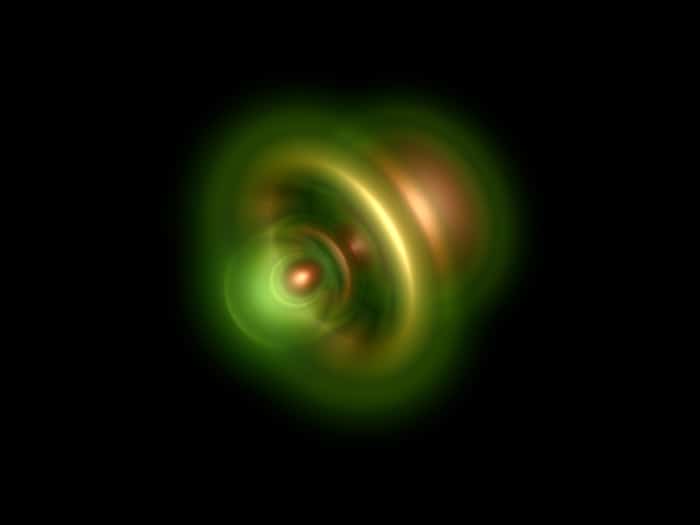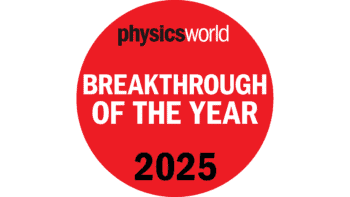Flash Physics is our daily pick of the latest need-to-know developments from the global physics community selected by Physics World‘s team of editors and reporters
Have supersolids been seen at last?
Fresh evidence for a new state of matter called a supersolid has been put forth by two independent teams of physicists. Supersolidity has been a controversial concept whereby some atoms in a solid material are able to form a superfluid at very low temperatures – allowing them to flow ghost-like through the solid without any resistance. While initial observations of supersolidity in solid helium-4 in the 2000s have since been explained in terms of more mundane physics, some physicists believe that supersolids should exist – at least in principle. Now, Wolfgang Ketterle and colleagues at the Massachusetts Institute of Technology in the US and Tilman Esslinger and colleagues of ETH Zürich in Switzerland have created supersolid analogues using ultracold atoms. Both systems comprise Bose–Einstein condensates (BEC), which are already superfluids. The teams used different optical techniques to make the atoms arrange themselves into crystalline structures of high and low density resembling a solid. They then showed that the atoms can flow freely through such crystals, while the regions of high and low density do not move. While these experiments involve dilute gases, rather than actual solids, both studies show that the supersolid state of matter is possible. Both experiments are described in preprints on arXiv.
Perimeter Institute and South American Institute for Fundamental Research launch partnership

The Perimeter Institute in Canada and the South American Institute for Fundamental Research (SAIFR) based at the São Paulo State University (UNESP) in Brazil, have come together to support exceptional early career physicists. The partnership was launched yesterday in a special ceremony held during the Advancement of Science in South America symposium in Brazil. “Brilliant young people are the lifeblood of this basic field of scientific research, where one breakthrough can literally change the world,” says Perimeter director Neil Turok. “The values that drive Perimeter’s success – the pursuit of ambitious research goals and the promotion of access to excellence for all – align closely with those of SAIFR at UNESP. We see this as an exceptional opportunity to work together and catalyse rising talent throughout South America, while increasing scientific interaction between Canada and the continent.” The partnership programme will develop training programmes for emerging talent at the graduate and postdoctoral levels in South America and provide opportunities for talented students to attend the Perimeter Scholars International (PSI) graduate programme in Canada. It also aims to improve educational outreach in middle and secondary schools in South America and train teachers in the use of Perimeter Institute in-class resources throughout school systems. The partnership will also set up joint scientific conferences between the two institutes, as well as having a shared faculty member – Pedro Vieira – who will divide his time between both institutes.
Photoionization measurement breaks the zeptosecond limit

The laser-induced ejection of electrons from an atom has been measured at a time resolution of several-hundred zeptoseconds. Reinhard Kienberger and colleagues at the Max Planck Institute of Quantum Optics, the Technical University of Munich and Ludwig Maximilians University, all in Germany, fired a 1 as (10–18 s) extreme ultraviolet light pulse at helium atoms, which ejects electrons in a process called photoionization. This is done in the presence of a much longer 4 fs (4 × 10–15 s) infrared laser pulse, which has the effect of accelerating the ejected electron. The kinetic energy of the electron is detected and is a function of the time difference between the peak amplitudes of the two pulses. This time difference can then be used to study the dynamics of how the electron is ejected from the helium atom. This process can take between 5–15 as and Kienberger and colleagues were able to study it at a record-breaking precision of 850 zeptoseconds (850 × 10–21 s). Helium is a relatively simple system, so the measurements should allow physicists to compare theoretical models of photoionization with experimental results. The research is described in Nature.
- You can find all our daily Flash Physics posts in the website’s news section, as well as on Twitter and Facebook using #FlashPhysics. Tune in to physicsworld.com to read today’s extensive news story on “Trump election shock threatens US science”.


